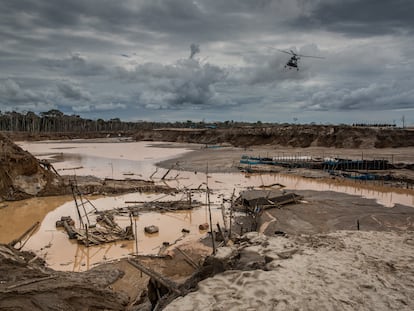Climate change leads to higher GDPs in the North and declines in the South
A University of Delaware report says global inequalities are reaching alarming levels, resulting in an overall annual loss of $2.1 trillion

The rich get richer and the poor get poorer. It’s an aphorism that often summarizes reports on social inequality at every level, and also applies to climate change. Loss and Damage Today: How Climate Change is Impacting Output and Capital, a recent report by the University of Delaware’s Climate Change Hub, documents the effects of climate change on national economies and quantifies the resulting gains and losses.
“Climate change is exacerbating existing global inequalities, with many high-income countries currently experiencing net gains, including an average increase of 4.7% to the GDP of European countries,” said one of the findings of the study, which contrasted this improvement with Southeast Asia and Southern Africa countries losing an average 14.1% and 11.2% of their GDP, respectively.
As the United Nations National Conference on Climate Change (COP 28) kicks off on November 30, the University of Delaware issued its report that COP 28 delegates could use when developing a framework for a new fund to help nations recover from the “loss and damage” caused by climate change. The report’s findings are based on 58 different models and shed light on the quantifiable consequences of climate change. In simple terms, climate change has already led to a 1.8% global economic loss in 2022, which increases to 6.3% when weighted by population. This disparity highlights the disproportionate impact on different countries and regions. Regardless, the world overall suffers annual losses of up to $2.1 trillion, roughly equivalent to Canada’s GDP. Since the landmark Rio de Janeiro Summit in 1992, cumulative losses amount to $21 trillion, comparable to the annual GDP of the United States, demonstrating a deteriorating situation that still has no remedy.
It’s a matter of time — what benefits a few today will eventually harm everyone. A case in point is Russia, which has seen a 4.2% increase in GDP attributable to climate change. Milder winters may have catalyzed economic activities, leading to the counterintuitive GDP increase. In contrast, Saudi Arabia has endured a 11.3% drop in GDP owing to climate change that led to reduced labor productivity and infrastructure loss.
The United States and China are currently near the point where losses under hotter temperatures outweigh benefits from milder winters. The U.S. saw essentially no gain or loss in GDP in 2022 relative to a non-climate-changed world, while China experienced a 1.8% loss.
Interestingly, Europe is seeing economic benefits from climate change overall, but southern European countries like Spain Greece, Portugal and Italy have experienced slight GDP losses. It’s the opposite in the north. Aside from the statistical blip of the Faroe Islands (+37.1% GDP), Norway, Belarus and Iceland have all recorded GDP increases of over 15% due to the warmer winters. Sweden, Germany, the United Kingdom, Austria, and the Netherlands — the economic powerhouses of Europe — are enjoying GDPs higher than they would have had without climate change.
“Least developed countries are exposed to an average population-weighted GDP loss of 8.3%, and Southeast Asia and Southern Africa are particularly affected, with countries losing an average 14.1% and 11.2% of their GDP, respectively. These losses highlight the disproportionate burden imposed by climate change on developing nations,” concluded the University of Delaware study.
Sign up for our weekly newsletter to get more English-language news coverage from EL PAÍS USA Edition
Tu suscripción se está usando en otro dispositivo
¿Quieres añadir otro usuario a tu suscripción?
Si continúas leyendo en este dispositivo, no se podrá leer en el otro.
FlechaTu suscripción se está usando en otro dispositivo y solo puedes acceder a EL PAÍS desde un dispositivo a la vez.
Si quieres compartir tu cuenta, cambia tu suscripción a la modalidad Premium, así podrás añadir otro usuario. Cada uno accederá con su propia cuenta de email, lo que os permitirá personalizar vuestra experiencia en EL PAÍS.
¿Tienes una suscripción de empresa? Accede aquí para contratar más cuentas.
En el caso de no saber quién está usando tu cuenta, te recomendamos cambiar tu contraseña aquí.
Si decides continuar compartiendo tu cuenta, este mensaje se mostrará en tu dispositivo y en el de la otra persona que está usando tu cuenta de forma indefinida, afectando a tu experiencia de lectura. Puedes consultar aquí los términos y condiciones de la suscripción digital.
More information
Archived In
Últimas noticias
Most viewed
- Reinhard Genzel, Nobel laureate in physics: ‘One-minute videos will never give you the truth’
- Oona Chaplin: ‘I told James Cameron that I was living in a treehouse and starting a permaculture project with a friend’
- Pablo Escobar’s hippos: A serious environmental problem, 40 years on
- Why we lost the habit of sleeping in two segments and how that changed our sense of time
- Charles Dubouloz, mountaineering star, retires at 36 with a farewell tour inspired by Walter Bonatti











































